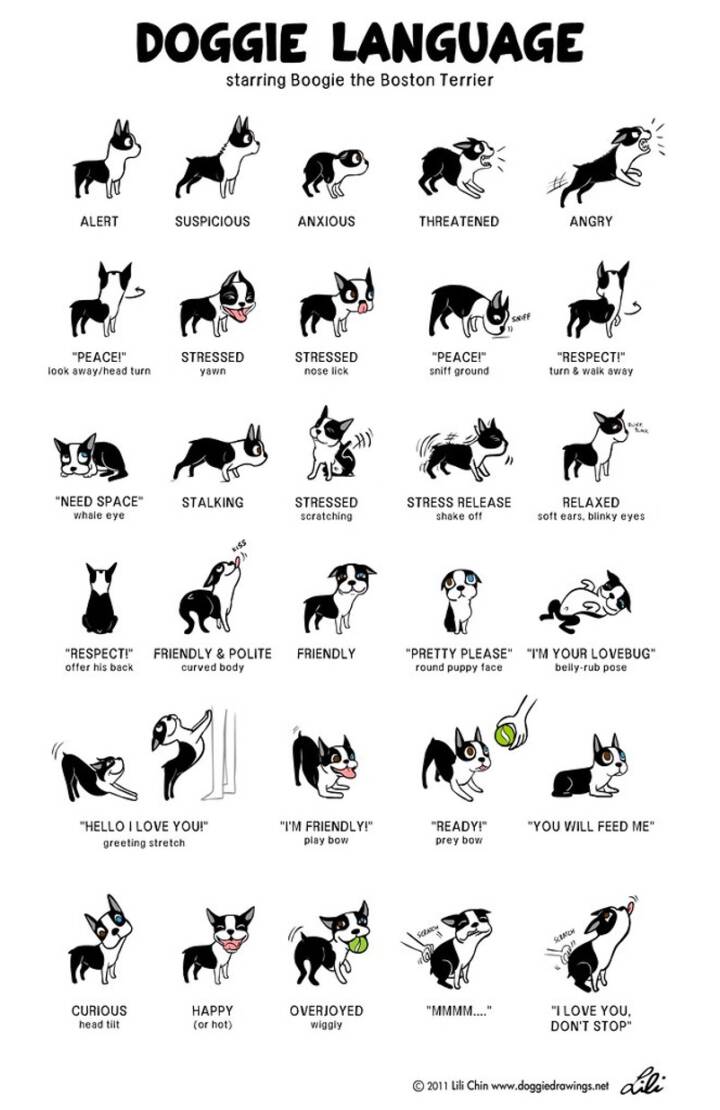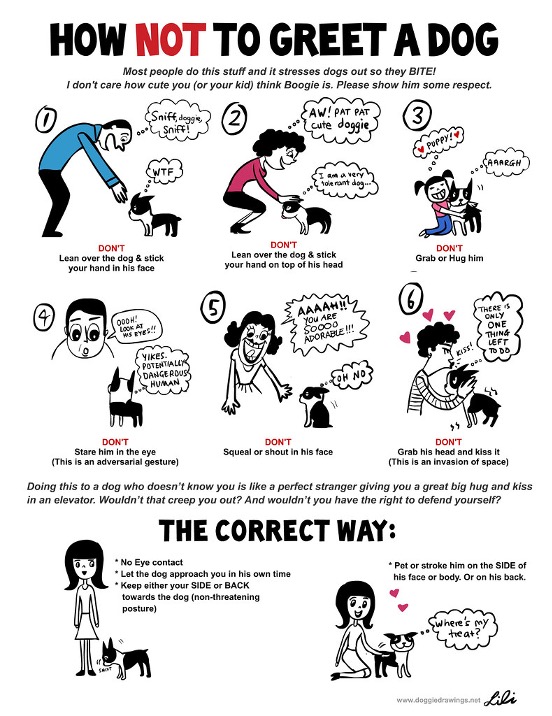How Do Dogs Talk to Us?
Do you know that your dog is constantly communicating with you? Are you looking and listening to what they are trying to tell you or are you missing the message?
Dogs communicate with us in a variety of different ways but often we humans miss their signals. To be responsible pet owners and guardians we must be sure that we know what to look for and how to interpret what we see. Learn below the many ways your dog is telling you how they are feeling!
*Once you have learned a little “Dog Speak,” test your new knowledge with our “Should you pet that dog?” game at the end!
The Most Common Signs of Stress in Dogs.
Some common signs of stress in dogs that we often miss because we pass them off as just normal behavior are:
1. Lip licking when there are no food or treats present.
2. Yawning when the dog is not tired.
3. Whale eye, or the dog’s head turned away but eye stays fixed which causes you to see the white of their eye.
4. Scratching when the dog has no skin issues or fleas.
5. Shaking off when the dog is not wet or has not just rolled in grass.
Dogs use these signals to tell us that they are uncomfortable, nervous, or afraid. When we don’t recognize the signals and stop doing what is making the dog uneasy, they can sometimes escalate their warnings to growling, snapping, or even biting.

How Dogs Talk With Their Mouth and Ears.
A dog with an open and relaxed mouth that is breathing normally (not panting fast), with relaxed ears and body is a calm dog.
When their mouth closes, their ears perk up and their body stiffens that tells us that the dog has become alert to something. When their ears go back and their mouth closes it can be a sign of appeasement, nervousness, or fear. This means we should step away from the dog and give them some space.
It is best to turn your body sideways and avoid direct eye contact with the dog, so your presence is not so overwhelming.

How Dogs Talk With Their Tails.
A dog’s tail also says a lot about how they are feeling. A common misconception is that a wagging tail is a sign of a happy dog. But this is not always the case. A wagging tail simply signals arousal and that can be good arousal (excited and happy) or bad arousal (alert or even aggressive).
Dogs also wag their tails when they are nervous. A high stiff tail, even if it is wagging, can indicate that the dog feels angry. A tail that is low and wagging combined with a lowered body, lip licking or any other of the five signs of stress tells you that the dog is extremely nervous.

Belly Rubs vs. Nervousness
People usually think that when dogs roll over and show their belly, they are asking for a belly rub. While sometimes this is true, other times dogs do this when they are nervous and want you to stay away.
The two dogs below might look similar, but based on what you learned here can you spot the differences?
The dog in the first image is rolling on his back exposing his belly but you also see lip licking and a head that is turned away to show the whites of the dog’s eye, or whale eye. This means the dog is uncomfortable with your approach or with something you are doing.
The second image is saying the opposite, he does want a belly rub. The second dog has a relaxed and open mouth, ears are relaxed, he is making eye contact and his body is much more natural and inviting than the first dog.


If you go to pet a dog and they roll over like in the first image, take a step back, and wait until they get back up before petting them. If they roll over again, be patient, and repeat. Rubbing a dog’s belly that is afraid of you does not help ease their fear but rather heightens it.
Introducing Friends and Family to Your Dog.
You also need to be aware of how strangers and even your friends/family interact with your dog because new and/or unfamiliar people can be overwhelming or scary.
First and foremost, everyone should know to ASK FIRST before petting another person’s dog because the answer could very well be NO.
While you may think it is okay for someone to pet your dog be sure to watch your dog’s body posture and facial expressions to ensure they are saying “yes” when approached by another human. A loose and relaxed body, open relaxed mouth, and relaxed eyes tell you that allowing the petting is okay.
If you see any signs of discomfort in your dog, tell the person that your dog would rather not be petted at the moment. Always be an advocate for your dog.

Why is Understanding Dog Communication Important?
Understanding how dogs communicate and learning your own dog’s signals can help them live a happy life. When EVERYONE learns about dog communication it also allows us to have a more dog friendly and dog safe community.
According to the Center for Disease Control, approximately 4.5 million dog bites occur in the United States each year. This is a jarring statistic that shows that people still have a lot to learn about dog behavior and emotions and how to interpret how they feel at any given moment.
Dogs, like us, are individuals and have their own likes and dislikes, comforts and discomforts. So, it is everyone’s responsibility to learn how to interact safely with dogs. Dog owners and guardians need to be aware of their own dogs’ feelings at all times and be their voice when others may not understand what they are saying.
Written by Nayla Garcia
Cat Communication 101
Now that you’re a pro dog communicator, are you ready to become a pro cat communicator?
If yes, click on the button below!
Test Your Knowledge!
Are you a pro dog communicator? Let’s find out! Try this fun game called “Should You Pet That Dog?”!
To learn more about how to prevent dog bites, click below!

